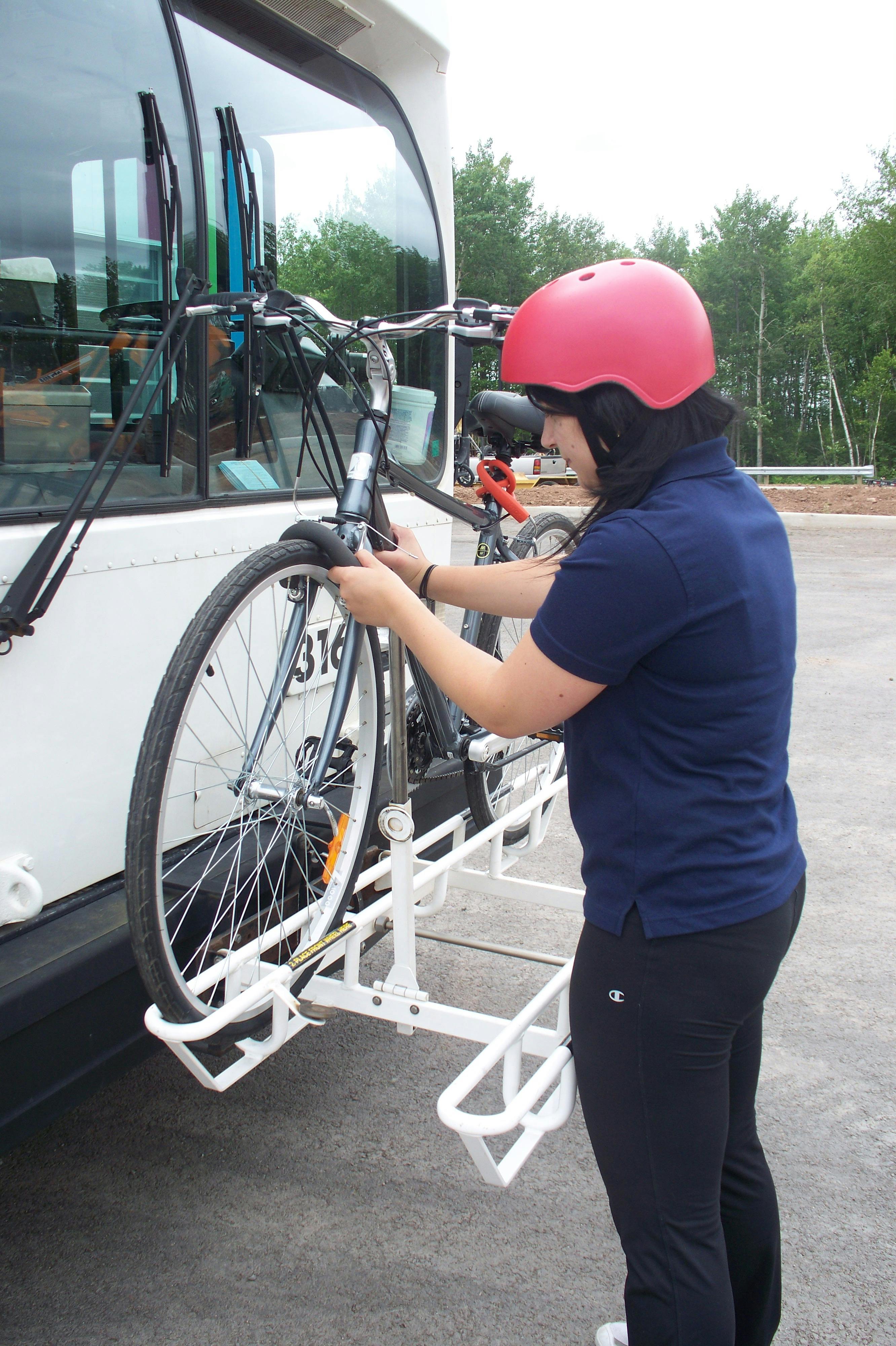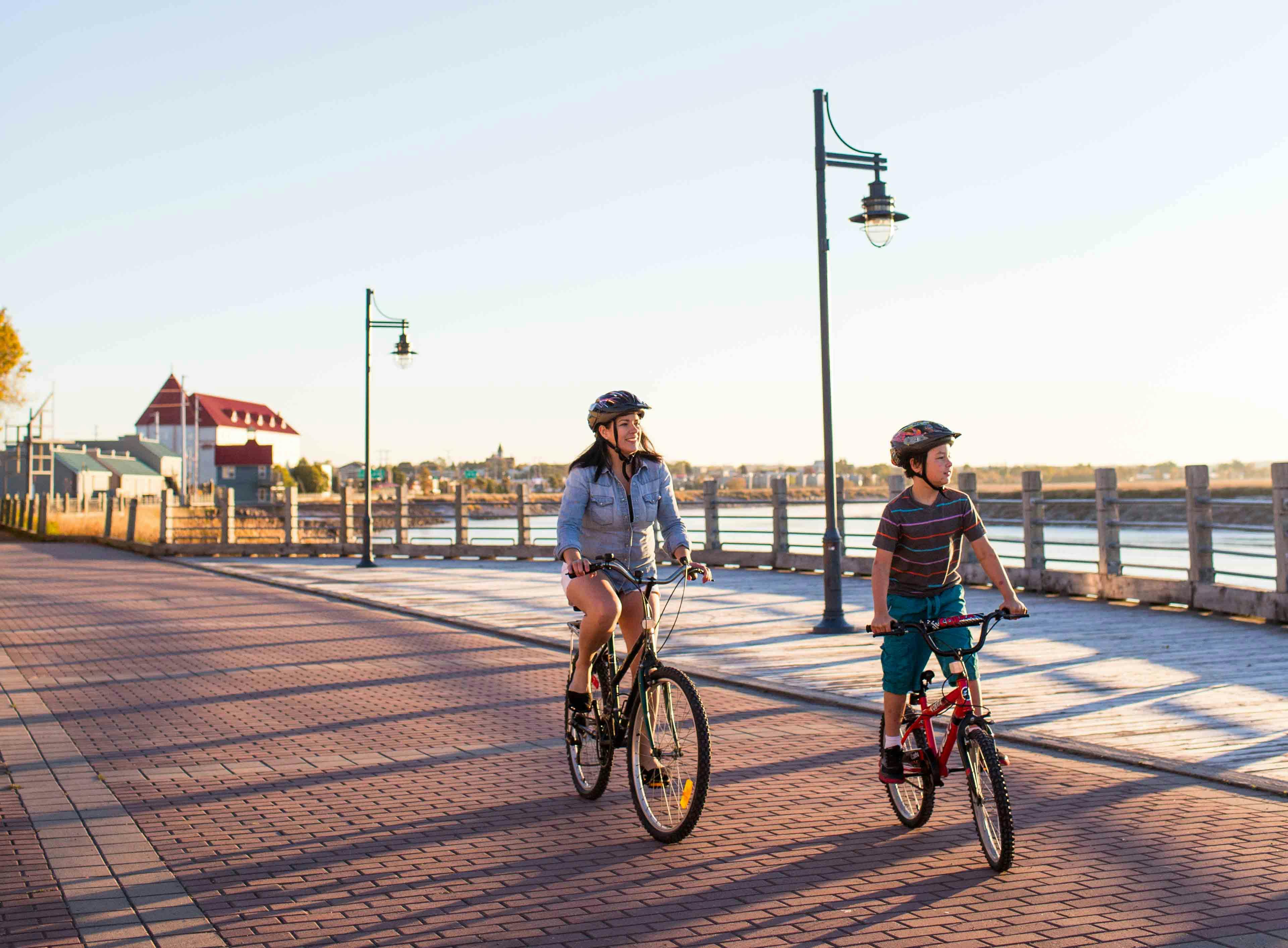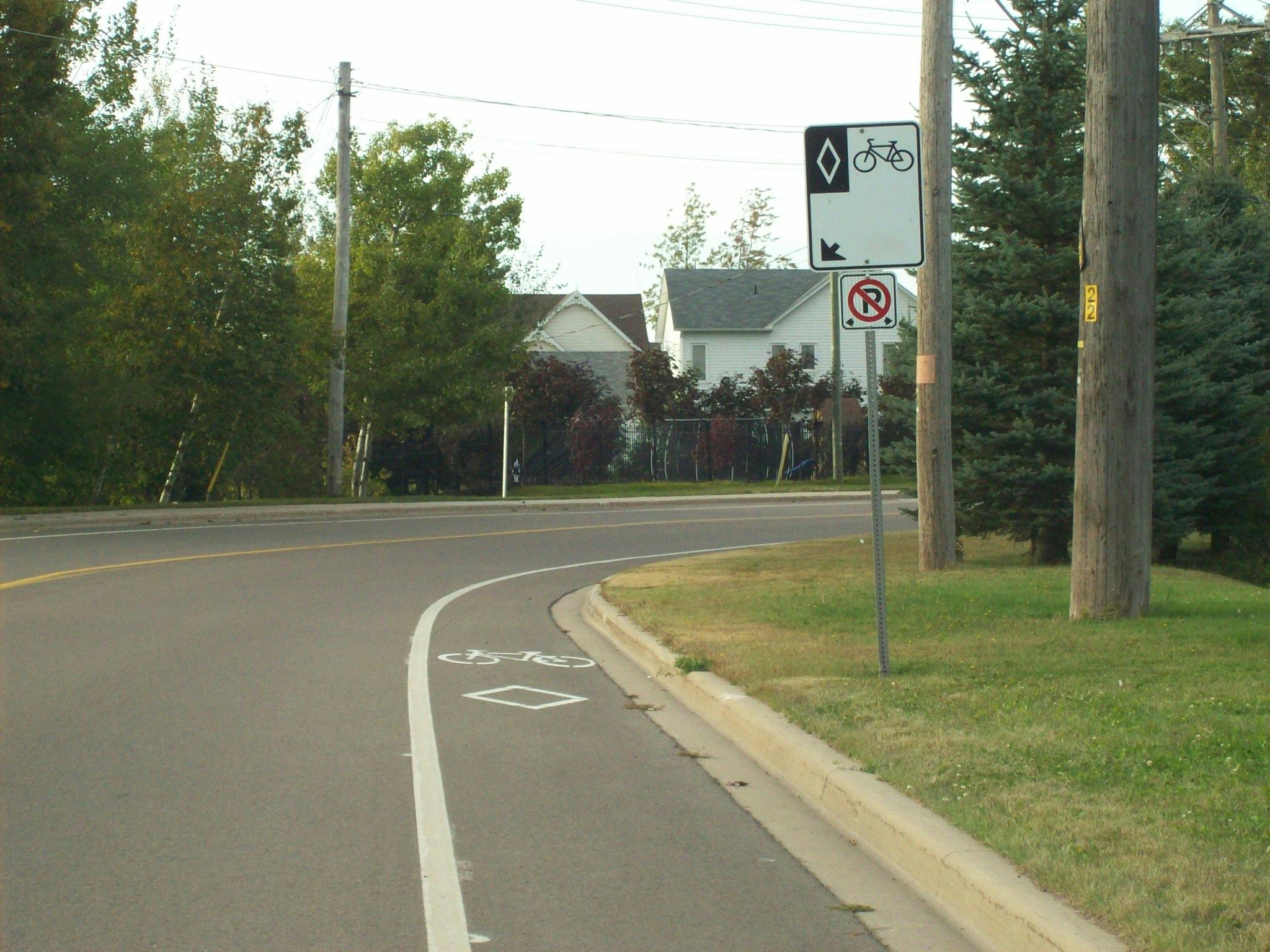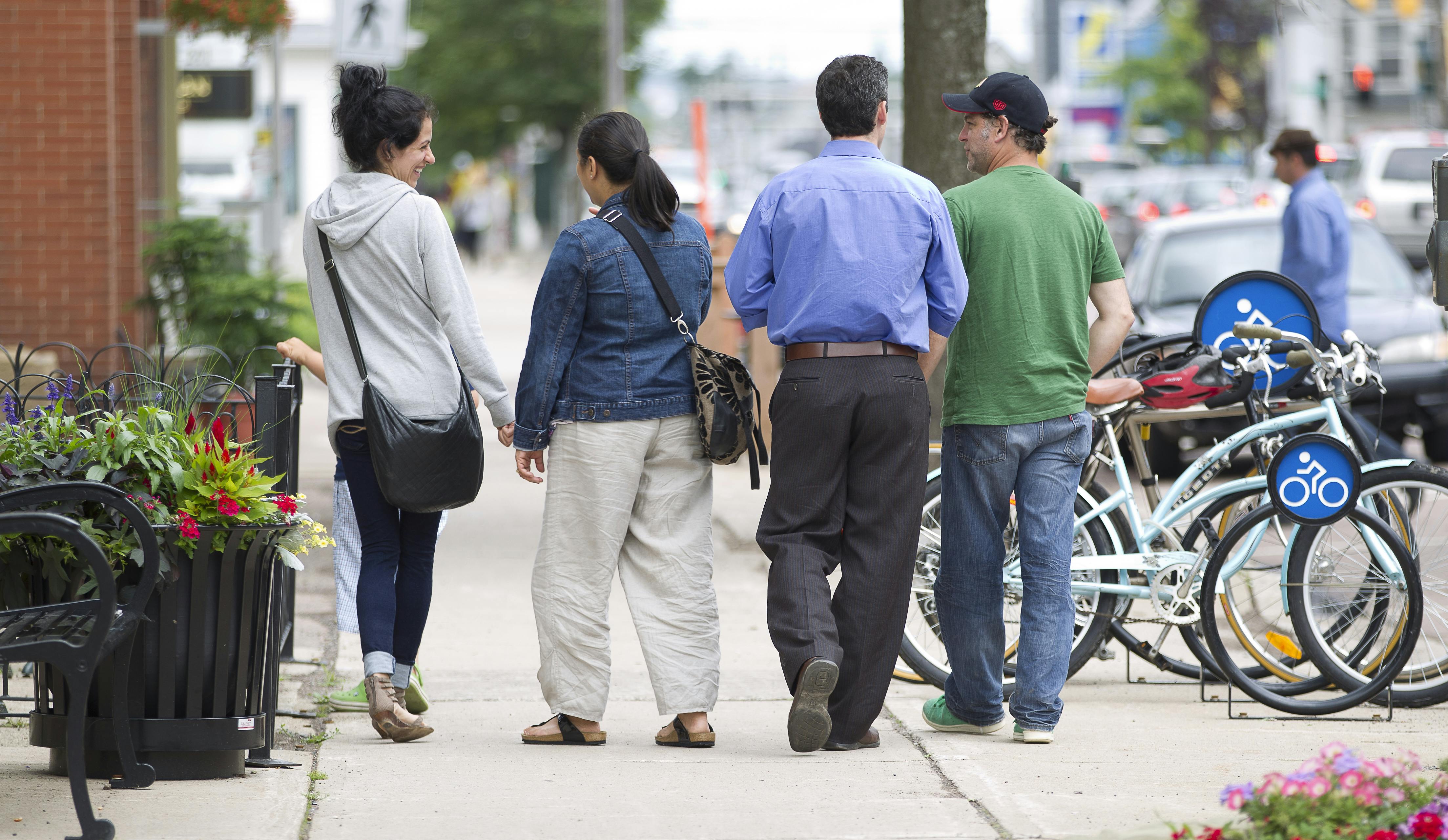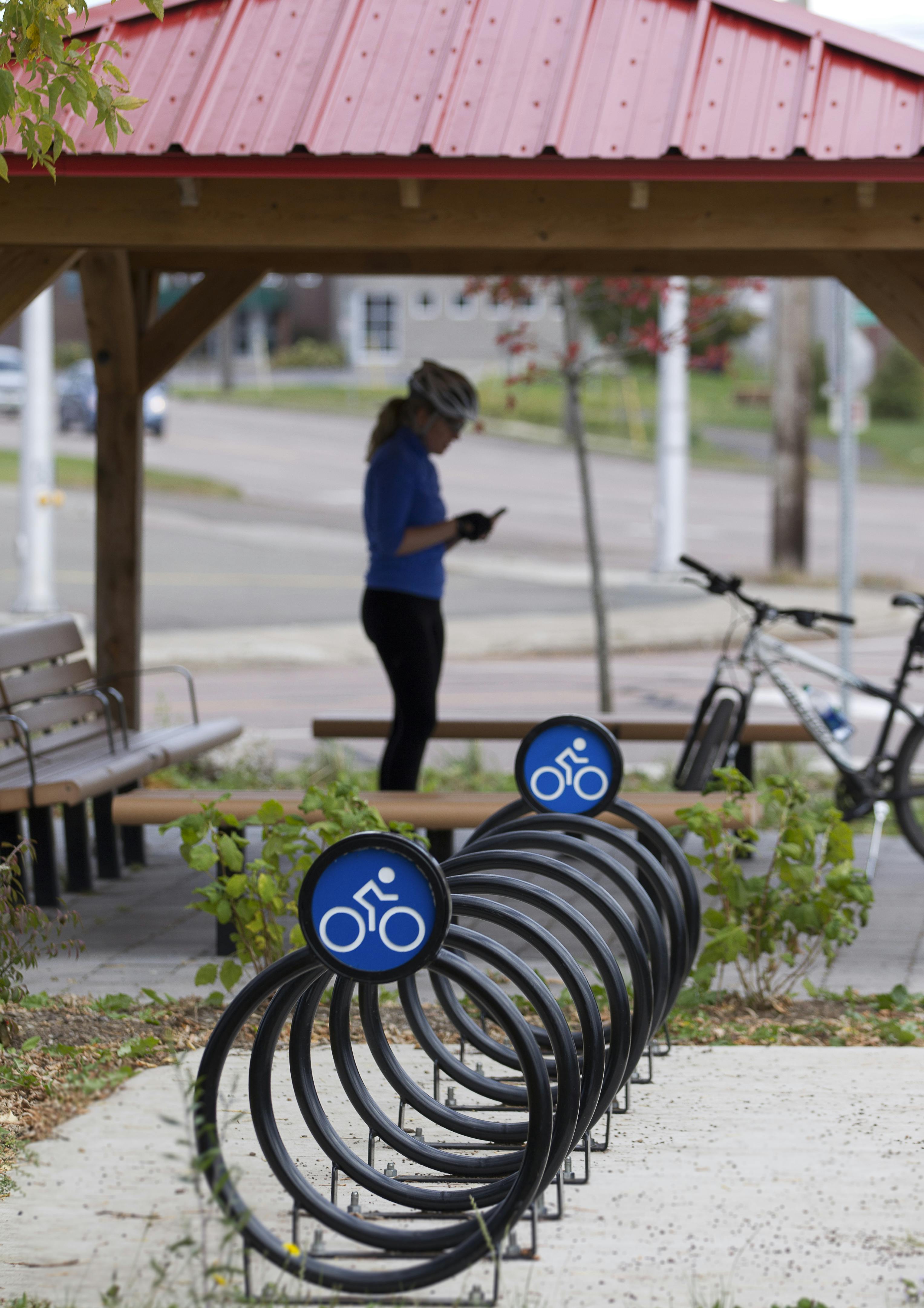Active Transportation Plan - Phase II
Consultation has concluded
Introduction 
Moncton’s current Active Transportation Plan, which was adopted in 2003, is now complete and many of its recommendations have been implemented over the past 15 years or so.
The Active Transportation Plan - Phase II project will look at the City as a whole to review and assess the situation specifically for pedestrians and cyclists, then propose recommendations to improve access, comfort, and safety.
Definition
Active Transportation (AT) includes any form of mostly human-powered transportation, such as walking, cycling, rolling (wheelchair, rollerblading, scootering, skateboarding), or using a mobility device.
Phase II will focus on everyday AT trips, such as walking to school, cycling to work, walking the dog, accessing public transit, and running errands, all without using a car.
Why do we need an AT Plan?
This plan will have a long-term impact for Moncton residents, as it will guide municipal employees on the planning, design, and implementation of active transportation infrastructure over the next 20+ years.
This includes:
- where sidewalks go, how wide they are, and how they are maintained;
- where cycling facilities go, what kind of facility (physically separated, bike lane, or mixed traffic), and how they are maintained;
- where trails go, what the surface material is, how they are maintained;
- how to design connections between sidewalks/trails and across roadways at crossings and intersections;
- what programs and policies are needed to support everyday active transportation.
This plan will study the needs for Moncton proper, but does take into account the connections to adjacent communities, in particular Dieppe and Riverview.
To be clear, the plan will consider how people access public transit through active transportation, but will not explore Codiac Transpo’s operations (such as where routes go and how frequently they run).
Why should you care about the AT Plan?
This Plan will recommend a complete network of active transportation amenities that will provide all residents of Moncton with a convenient, safe, and healthy way to get around the City without requiring the use of a personal vehicle.
The Plan will also recommend improvements to achieve this vision; it aligns with the PlanMoncton Municipal Plan by providing mobility options to – and along – the City’s mixed-use centres and corridors, and highlights the connection between land use and transportation.
Future studies will be carried out on specific road corridors to consider how to implement the plan recommendations.
Introduction 
Moncton’s current Active Transportation Plan, which was adopted in 2003, is now complete and many of its recommendations have been implemented over the past 15 years or so.
The Active Transportation Plan - Phase II project will look at the City as a whole to review and assess the situation specifically for pedestrians and cyclists, then propose recommendations to improve access, comfort, and safety.
Definition
Active Transportation (AT) includes any form of mostly human-powered transportation, such as walking, cycling, rolling (wheelchair, rollerblading, scootering, skateboarding), or using a mobility device.
Phase II will focus on everyday AT trips, such as walking to school, cycling to work, walking the dog, accessing public transit, and running errands, all without using a car.
Why do we need an AT Plan?
This plan will have a long-term impact for Moncton residents, as it will guide municipal employees on the planning, design, and implementation of active transportation infrastructure over the next 20+ years.
This includes:
- where sidewalks go, how wide they are, and how they are maintained;
- where cycling facilities go, what kind of facility (physically separated, bike lane, or mixed traffic), and how they are maintained;
- where trails go, what the surface material is, how they are maintained;
- how to design connections between sidewalks/trails and across roadways at crossings and intersections;
- what programs and policies are needed to support everyday active transportation.
This plan will study the needs for Moncton proper, but does take into account the connections to adjacent communities, in particular Dieppe and Riverview.
To be clear, the plan will consider how people access public transit through active transportation, but will not explore Codiac Transpo’s operations (such as where routes go and how frequently they run).
Why should you care about the AT Plan?
This Plan will recommend a complete network of active transportation amenities that will provide all residents of Moncton with a convenient, safe, and healthy way to get around the City without requiring the use of a personal vehicle.
The Plan will also recommend improvements to achieve this vision; it aligns with the PlanMoncton Municipal Plan by providing mobility options to – and along – the City’s mixed-use centres and corridors, and highlights the connection between land use and transportation.
Future studies will be carried out on specific road corridors to consider how to implement the plan recommendations.
Thanks for your interest in the Active Transportation - Phase II project!
Feel free to submit your question(s)/comment(s) here; a response will be provided either publicly or privately.
-
Share Is the city looking to other places in the world for examples? It goes without saying that the Netherlands is the primo example that we should all be looking to for guidelines and best practices. Outside of the Netherlands though, I suggest looking into the Finish city of Oulu. It averages around 22% cycling (32% in summer, 12% in winter). https://www.theguardian.com/cities/2016/feb/12/ice-cycles-northerly-world-cities-winter-bicycle-revolution on Facebook Share Is the city looking to other places in the world for examples? It goes without saying that the Netherlands is the primo example that we should all be looking to for guidelines and best practices. Outside of the Netherlands though, I suggest looking into the Finish city of Oulu. It averages around 22% cycling (32% in summer, 12% in winter). https://www.theguardian.com/cities/2016/feb/12/ice-cycles-northerly-world-cities-winter-bicycle-revolution on Twitter Share Is the city looking to other places in the world for examples? It goes without saying that the Netherlands is the primo example that we should all be looking to for guidelines and best practices. Outside of the Netherlands though, I suggest looking into the Finish city of Oulu. It averages around 22% cycling (32% in summer, 12% in winter). https://www.theguardian.com/cities/2016/feb/12/ice-cycles-northerly-world-cities-winter-bicycle-revolution on Linkedin Email Is the city looking to other places in the world for examples? It goes without saying that the Netherlands is the primo example that we should all be looking to for guidelines and best practices. Outside of the Netherlands though, I suggest looking into the Finish city of Oulu. It averages around 22% cycling (32% in summer, 12% in winter). https://www.theguardian.com/cities/2016/feb/12/ice-cycles-northerly-world-cities-winter-bicycle-revolution link
Is the city looking to other places in the world for examples? It goes without saying that the Netherlands is the primo example that we should all be looking to for guidelines and best practices. Outside of the Netherlands though, I suggest looking into the Finish city of Oulu. It averages around 22% cycling (32% in summer, 12% in winter). https://www.theguardian.com/cities/2016/feb/12/ice-cycles-northerly-world-cities-winter-bicycle-revolution
jci asked almost 4 years agoGood afternoon,
Thank you for your question.
For the Phase II project, our consultants looked at North American examples of cities with similar sizes to Moncton that have AT plans that are being implemented which included Kelowna, Halifax, Burlington (Vermont), and Fort Collins (Colorado).
The consultants definitely drew from European examples including the Netherlands and what is happening in Oulu. The facilities recommended in the plan align with best practices that draw on the success of designing for active transportation in Dutch, Danish and other cities. The design and success of active transportation in these cities is also done through larger transportation planning exercises that reorient how and where motor vehicles travel through the city.
I hope this answers your question.
Kind regards,
Michelle
-
Share While I understand that this plan aims to study the needs for Moncton proper, I find it odd that it does take into account the connections to adjacent communities, in particular Dieppe and Riverview. I feel this is very much the same approach that has lead to trails within the city being developed independently, with nothing connecting them together. Since Greater Moncton Area residents work and live across our three cities (and beyond), some basic urban planning should be done between the three municipalities to encourage AT use. Not taking into account the connections between across all three communities is akin to each city building their own roads, but not connecting them together at the city limits. In particular, I think of the lack of an AT trail connecting Humphrey/Lewisville Rd. to Paul St. (and beyond) in Dieppe, or the lack of sidewalks and trails connecting West Main St. with Salisbury Rd. and the causeway (I really hope this last one is remedied with the new bridge). While I understand that Moncton taxpayer dollars shouldn't go to building trails in Dieppe or Riverview, building trails to connect to Dieppe/Riverview seems like a win-win, no? on Facebook Share While I understand that this plan aims to study the needs for Moncton proper, I find it odd that it does take into account the connections to adjacent communities, in particular Dieppe and Riverview. I feel this is very much the same approach that has lead to trails within the city being developed independently, with nothing connecting them together. Since Greater Moncton Area residents work and live across our three cities (and beyond), some basic urban planning should be done between the three municipalities to encourage AT use. Not taking into account the connections between across all three communities is akin to each city building their own roads, but not connecting them together at the city limits. In particular, I think of the lack of an AT trail connecting Humphrey/Lewisville Rd. to Paul St. (and beyond) in Dieppe, or the lack of sidewalks and trails connecting West Main St. with Salisbury Rd. and the causeway (I really hope this last one is remedied with the new bridge). While I understand that Moncton taxpayer dollars shouldn't go to building trails in Dieppe or Riverview, building trails to connect to Dieppe/Riverview seems like a win-win, no? on Twitter Share While I understand that this plan aims to study the needs for Moncton proper, I find it odd that it does take into account the connections to adjacent communities, in particular Dieppe and Riverview. I feel this is very much the same approach that has lead to trails within the city being developed independently, with nothing connecting them together. Since Greater Moncton Area residents work and live across our three cities (and beyond), some basic urban planning should be done between the three municipalities to encourage AT use. Not taking into account the connections between across all three communities is akin to each city building their own roads, but not connecting them together at the city limits. In particular, I think of the lack of an AT trail connecting Humphrey/Lewisville Rd. to Paul St. (and beyond) in Dieppe, or the lack of sidewalks and trails connecting West Main St. with Salisbury Rd. and the causeway (I really hope this last one is remedied with the new bridge). While I understand that Moncton taxpayer dollars shouldn't go to building trails in Dieppe or Riverview, building trails to connect to Dieppe/Riverview seems like a win-win, no? on Linkedin Email While I understand that this plan aims to study the needs for Moncton proper, I find it odd that it does take into account the connections to adjacent communities, in particular Dieppe and Riverview. I feel this is very much the same approach that has lead to trails within the city being developed independently, with nothing connecting them together. Since Greater Moncton Area residents work and live across our three cities (and beyond), some basic urban planning should be done between the three municipalities to encourage AT use. Not taking into account the connections between across all three communities is akin to each city building their own roads, but not connecting them together at the city limits. In particular, I think of the lack of an AT trail connecting Humphrey/Lewisville Rd. to Paul St. (and beyond) in Dieppe, or the lack of sidewalks and trails connecting West Main St. with Salisbury Rd. and the causeway (I really hope this last one is remedied with the new bridge). While I understand that Moncton taxpayer dollars shouldn't go to building trails in Dieppe or Riverview, building trails to connect to Dieppe/Riverview seems like a win-win, no? link
While I understand that this plan aims to study the needs for Moncton proper, I find it odd that it does take into account the connections to adjacent communities, in particular Dieppe and Riverview. I feel this is very much the same approach that has lead to trails within the city being developed independently, with nothing connecting them together. Since Greater Moncton Area residents work and live across our three cities (and beyond), some basic urban planning should be done between the three municipalities to encourage AT use. Not taking into account the connections between across all three communities is akin to each city building their own roads, but not connecting them together at the city limits. In particular, I think of the lack of an AT trail connecting Humphrey/Lewisville Rd. to Paul St. (and beyond) in Dieppe, or the lack of sidewalks and trails connecting West Main St. with Salisbury Rd. and the causeway (I really hope this last one is remedied with the new bridge). While I understand that Moncton taxpayer dollars shouldn't go to building trails in Dieppe or Riverview, building trails to connect to Dieppe/Riverview seems like a win-win, no?
Mario Gautreau asked over 4 years agoHello,
And thank you for sharing this perspective. Colleagues from Moncton, Dieppe and Riverview meet regularly; Active Transportation and trail connections are part of these ongoing discussions. Your message will be forwarded to that group, as well as the team assigned to this project for consideration when reviewing potential recommendations.
Kind regards,
Nicole -
Share Can a sidewalk be demolished and be transformed into a paved multi use trail of two direction ? Considering the limited space available around streets, a single 2 direction trail with cement blocks place in strategic areas for extra safety seems like a smart solution to create the extra space needed to build a safe trail system that would not affect street cars traffic. on Facebook Share Can a sidewalk be demolished and be transformed into a paved multi use trail of two direction ? Considering the limited space available around streets, a single 2 direction trail with cement blocks place in strategic areas for extra safety seems like a smart solution to create the extra space needed to build a safe trail system that would not affect street cars traffic. on Twitter Share Can a sidewalk be demolished and be transformed into a paved multi use trail of two direction ? Considering the limited space available around streets, a single 2 direction trail with cement blocks place in strategic areas for extra safety seems like a smart solution to create the extra space needed to build a safe trail system that would not affect street cars traffic. on Linkedin Email Can a sidewalk be demolished and be transformed into a paved multi use trail of two direction ? Considering the limited space available around streets, a single 2 direction trail with cement blocks place in strategic areas for extra safety seems like a smart solution to create the extra space needed to build a safe trail system that would not affect street cars traffic. link
Can a sidewalk be demolished and be transformed into a paved multi use trail of two direction ? Considering the limited space available around streets, a single 2 direction trail with cement blocks place in strategic areas for extra safety seems like a smart solution to create the extra space needed to build a safe trail system that would not affect street cars traffic.
Pierre asked over 4 years agoHello,
And thank you for this suggestion. It will be included in report to the project team for consideration in locations where this approach may be ideal.
Kind regards,
Nicole -
Share I come from a larger city where they had many bike lanes. So I love the bike lanes in Moncton. And I ride on St. George Street and Edinburgh DR often. However riding here I have noticed that quite often I have to stay on the left side of the lane (closer to traffic) due to broken glass and other debris being in the lane. Drivers dislike this as it looks like I am not using the lane fully and have had a few comment to me via their windows as they drive by. Drivers don't understand that we can't ride where there is a concern for safety. Just like they do in other cities the bike lanes need to be swept on a regular basis to keep them free of glass etc for our cyclists' safety. on Facebook Share I come from a larger city where they had many bike lanes. So I love the bike lanes in Moncton. And I ride on St. George Street and Edinburgh DR often. However riding here I have noticed that quite often I have to stay on the left side of the lane (closer to traffic) due to broken glass and other debris being in the lane. Drivers dislike this as it looks like I am not using the lane fully and have had a few comment to me via their windows as they drive by. Drivers don't understand that we can't ride where there is a concern for safety. Just like they do in other cities the bike lanes need to be swept on a regular basis to keep them free of glass etc for our cyclists' safety. on Twitter Share I come from a larger city where they had many bike lanes. So I love the bike lanes in Moncton. And I ride on St. George Street and Edinburgh DR often. However riding here I have noticed that quite often I have to stay on the left side of the lane (closer to traffic) due to broken glass and other debris being in the lane. Drivers dislike this as it looks like I am not using the lane fully and have had a few comment to me via their windows as they drive by. Drivers don't understand that we can't ride where there is a concern for safety. Just like they do in other cities the bike lanes need to be swept on a regular basis to keep them free of glass etc for our cyclists' safety. on Linkedin Email I come from a larger city where they had many bike lanes. So I love the bike lanes in Moncton. And I ride on St. George Street and Edinburgh DR often. However riding here I have noticed that quite often I have to stay on the left side of the lane (closer to traffic) due to broken glass and other debris being in the lane. Drivers dislike this as it looks like I am not using the lane fully and have had a few comment to me via their windows as they drive by. Drivers don't understand that we can't ride where there is a concern for safety. Just like they do in other cities the bike lanes need to be swept on a regular basis to keep them free of glass etc for our cyclists' safety. link
I come from a larger city where they had many bike lanes. So I love the bike lanes in Moncton. And I ride on St. George Street and Edinburgh DR often. However riding here I have noticed that quite often I have to stay on the left side of the lane (closer to traffic) due to broken glass and other debris being in the lane. Drivers dislike this as it looks like I am not using the lane fully and have had a few comment to me via their windows as they drive by. Drivers don't understand that we can't ride where there is a concern for safety. Just like they do in other cities the bike lanes need to be swept on a regular basis to keep them free of glass etc for our cyclists' safety.
Martin asked over 4 years agoHello,
Thank you for sharing your feedback. Building awareness for all road users is a key component of this project. Our Public Works department will also be advised of these locations for street sweeping.
Kind regards,
Nicole
Signup Banner
FAQs
- Why is this planned network different than what was implemented Phase 1?
- How will all these projects be built? Where are the priorities?
- What is the timeframe for this plan?
- There is a proposed route on my street. What does this mean?
- Why isn’t XYZ street included in the network?
- What is being proposed for the pedestrian network?
- How much will this plan cost?
- If this plan is implemented, will more people cycle around Moncton?
- What about winter?
Active Transportation Amenities
Who's listening
-
Community Development Officer – Sports, Recreation and Active Living

-

Email letschat@moncton.ca




